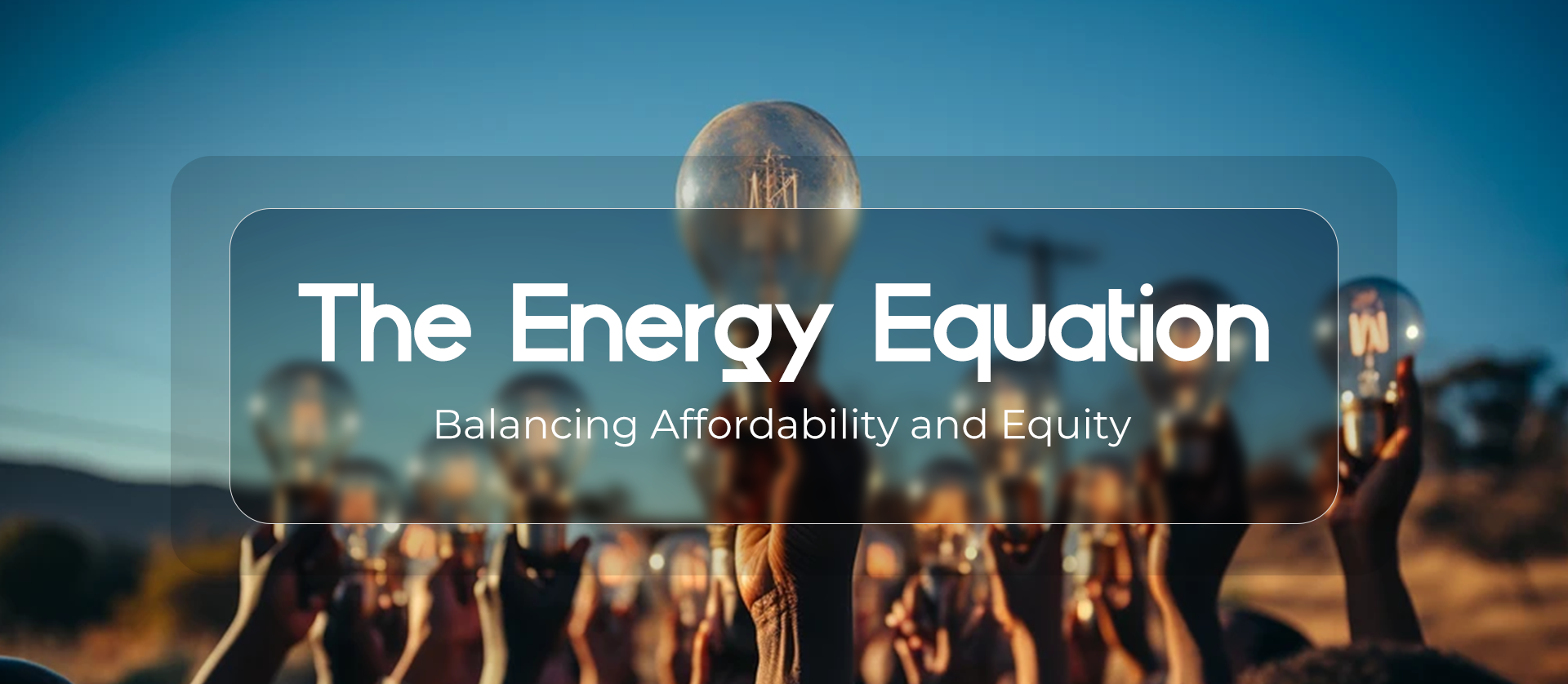- Navigating the challenges of water sustainability
- The role of field workforce and customers in ensuring water sustainability
- The shift to connected platforms
- Turning water into wine with vertically integrated and connected platforms
- Re-imagining field operations with vertically integrated and connected platforms
- Conclusion
From Crumbling Pipes to Connected Platforms:
Charting the Course for Water Sustainability

"Water, water everywhere, but not a drop to drink.”
This ancient saying rings true even today as we navigate the challenges of maintaining resilient water infrastructure. From the wisdom of the ages to the cutting-edge innovations of today, the journey of water management is akin to sailing uncharted waters, filled with both peril and promise.
Like weathered sailors battling against the elements, utilities confront the daunting task of renewing and replacing their aging water and wastewater infrastructure. From crumbling pipelines to outdated distribution systems, the spectre of decay looms large, threatening the stability and reliability of our water supply.
The latest "State of the Water Industry Report 2023" by the American Water Works Association highlights a challenging situation. It underscores the pressing issues of aging infrastructure, leaky pipes, securing long-term water supply, and the need to raise awareness about the importance of water resources. These challenges stand as significant hurdles in our efforts to repair and upgrade the water infrastructure for a sustainable water future.
In my three decades of working within the utilities, I've come to appreciate the paramount importance of resilient water infrastructure and the essential role of field operations in supporting it. Delivering a reliable water supply to homes and businesses is not just a necessity - it's a lifeline. However, it's imperative to be prepared for the unexpected, whether it's managing increased demand during scorching heatwaves or swiftly addressing burst pipes during the frigid depths of winter. Yet, these challenges of aging infrastructure merely mark the beginning of a greater odyssey.
As I reflect on my experiences, it becomes evident that fortifying our infrastructure is just one piece of the puzzle. Beyond managing the physical infrastructure lies other critical challenges such as emergency preparedness, groundwater management, customer engagement and fragmented field operations.
In the big picture of water conservation, field technicians play a critical role. These are the folks who are out there fixing pipes, inspecting valves, and ensuring our water systems operate seamlessly. These dedicated individuals, often unseen but always essential, do more than just fix things. In communities large and small, they forge connections with residents, educating them about the importance of water conservation. Whether it's implementing smart metering systems to track usage more accurately or employing advanced leak detection technologies to pinpoint hidden losses, they are instrumental in safeguarding our most precious resource.
However, the field workforce, the backbone of the utility industry, confronts its own array of challenges. From disjointed field operations and an aging workforce to the urgent need for continuous upskilling and safety measures, the challenges are multifaceted and pressing.
Beyond the field, utility customers are also integral partners in water conservation endeavors, wielding significant influence through their daily habits. By embracing personalized water conservation tips and real-time monitoring tools tailored to their usage patterns, customers can make informed decisions about their water consumption.
Hence, it’s evident that our journey towards water sustainability must begin by acknowledging and empowering our most invaluable asset: our people.
The shift to connected platforms…...
Just like a ship needs a sturdy hull to withstand rough seas, our water infrastructure requires empowered field technicians, engaged customers and robust technology to weather the storms of modern challenges. Focused on aging water infrastructure management, emergency readiness, and long-term sustainability, many water utilities today are assuming the role of trusted advisors. They are collaborating closely with field technicians and customers, aiming to ensure the resilience and sustainability of water systems while providing essential guidance and support.
Just like a ship needs a sturdy hull to withstand rough seas, our water infrastructure requires empowered field technicians, engaged customers and robust technology to weather the storms of modern challenges
When examining water infrastructure management and conservation, it's important to recognize the transformative impact of data and artificial intelligence (AI) across utility operations, customer engagement, and workforce optimization.
By providing customers with instantaneous access to their water usage data, billing information, and personalized tips, AI-driven insights empower them to make informed decisions about their water consumption. This transparency not only enhances customer awareness but also encourages responsible water usage practices. For instance, encouraging the adoption of smart metering empowers customers to actively participate in conservation efforts by providing insights into their usage habits and promoting mindful water practices.
Real time insights, powered with artificial intelligence also ensure operational efficiency, proactive maintenance, and enhanced collaboration for the field workforce. For example, by promptly identifying leaks or irregularities in usage patterns, industry focused AI algorithms facilitate early and accurate schedule and dispatch, thus minimizing water wastage and promoting efficient resource utilization. Utilities, in turn, benefit from seamless service delivery, optimal resource utilization and real time visibility into field operations.
Today, utilities are shifting away from traditional and fragmented methods of field service management. They are adopting vertically integrated platforms that leverage data, automation, and AI to create cohesive interactions among customers, water infrastructure, field personnel, and back-office teams.
Through advanced analytics, end-to-end field service management and sophisticated CRMs, water utilities are meeting complex expectations such as real time monitoring of water supply and optimizing resource allocation for efficient field operations. They are employing predictive analytics and industry focused AI algorithms to forecast demand and real-time usage analytics to match supply.
This integrated mode of field operations, known as the connected platform-driven approach, transcends basic service delivery in water utility management. It involves orchestrating a symbiotic relationship between supply, demand, and sustainability in the water sector. In my experience, connected platforms in water utilities proactively engage customers, streamline field operations, and ensure predictive asset management. These platforms enhance communication and collaboration between customers, field workers and back-office teams to maintain a reliable and resilient water infrastructure.
Turning water into wine with vertically integrated and connected platforms….
Modern connected platforms utilize industry focused algorithms and historical data to generate accurate schedules and forecasts. From predictive maintenance algorithms that identify potential failures before they occur, to smart sensors that detect leaks and abnormalities accurately, connected platforms help in anticipating and responding to challenges in real-time. This proactive approach ensures seamless service delivery for water utilities.
From predictive maintenance algorithms that identify potential failures before they occur, to smart sensors that detect leaks and abnormalities accurately, connected platforms help in anticipating and responding to challenges in real-time.
But that's just scratching the surface.
I view data liberation as the cornerstone of utility success in a connected ecosystem. By setting free all the valuable data trapped in CRM and asset management systems, a connected field service management platform can maximize the efficiency of field operations. I’m referring to the utilization of enhanced field data collection through map, asset redlining, asset history tracking, predictive analytics, and customer-facing workflows. This holistic approach involves the integration of accurate data back into the source systems, ensuring a connected customer and workforce experience across customers, water infrastructure, field workers and back-office teams.
The benefit?
Water utilities are able to address planned and unplanned work appointments effectively, improve first-time fix rates, estimate water usage, and project accurate billing, even with limited or incomplete data. AI supports frontline field workers in understanding customer needs and preferences, facilitating proactive service delivery while ensuring workforce satisfaction.
Re-imagining field operations with vertically Integrated and connected platforms
Efficient field operations are vital for ensuring seamless water service delivery. Whether it’s handling routine tasks like meter checks or attending unexpected challenges such as pipeline leaks and equipment breakdowns. To manage these tasks effectively without overburdening resources, I advocate water utilities to adopt vertically integrated and connected platforms. With deep industry expertise, these platforms prioritize the needs of field workers, empowering them to excel in their roles, thereby, ensuring uninterrupted service to customers.
Vertically integrated and connected platforms offer critical applications that can drive transformation within water utilities, including:
- Ensuring first time fix rates: Improving the maintenance of current water infrastructure, and addressing leaky pipes is critical. One significant way to achieve this is by improving first-time fix rates. Vertically Integrated and connected platforms ensuring that appropriate field technicians arrive at the designated location, armed with the necessary information, skills, and tools to address the issue at hand.
- Smart asset management: Integrated platforms facilitate integration of asset data and maintenance schedules, that enables water utilities to optimize asset performance, prioritize maintenance tasks, and extend the lifespan of critical infrastructure with continuous asset monitoring. With comprehensive asset health tracking, water utilities can optimize asset lifecycle management, water transmission and ensuring efficient allocation of resources.
- Predictive maintenance: By leveraging data analytics and industry focused algorithms, water utilities can predict equipment failures and leaky pipes before they occur. This predictive maintenance approach is vital for addressing water challenges, as it allows utilities to proactively maintain infrastructure and prevent disruptions in water supply.
- AI powered scheduling and dispatching: Utilizing industry focused algorithms, water utilities can simply schedule and dispatch for planned and unplanned tasks to generate accurate schedules, even with inadequate data.
- Real-time monitoring: Smart sensors and IoT devices provide real-time data on water quality, consumption patterns, and infrastructure health, enabling utilities to quickly detect and address issues such as leaks and contamination. In addition to this, pairing route optimization with intelligent scheduling and dispatching ensures 360-degree visibility and a seamless workforce-led customer experience.
- Data-driven decision making: Connected platforms enable utilities to collect and analyze vast amounts of data from various sources, empowering them to make informed decisions regarding infrastructure investments, resource allocation, and regulatory compliance.
- On-the-job training: Water utilities can enhance the skills of their field technicians in real-time by providing access to training modules tailored to their specific needs. Water utilities are empowered to build a future ready workforce by tracking progress of field technicians and learning from knowledge gaps identified during their daily operations.
- Resilience and disaster preparedness: By leveraging predictive analytics and scenario modeling, utilities can assess vulnerabilities, develop contingency plans, and enhance resilience to natural disasters, ensuring the continuity of water supply during emergencies.
- Improved customer engagement: By empowering customers with self-serve portals, water utilities can empower their customers with real-time access to usage data, billing information, and conservation tips. As a result, customers can monitor their water usage, understand their bills better, and receive personalized tips on how to conserve water efficiently.
- Safety and risk mitigation: Vertically integrated and connected platforms are instrumental in enhancing field technician’s safety and mitigating risks for water utilities. By providing field workers with mobile devices and access to real-time data, these platforms enable quicker response times, offline access of training manuals and an efficient work order management.
In summary, achieving sustainable water operations demands more than just technological upgrades or infrastructure enhancements. It requires a comprehensive approach that addresses the intricate interplay between technical, social, and ecological factors. Water utilities face the daunting task of navigating through technical complexities, evolving customer needs, and fragmented field operations to achieve this goal.
Yet, amidst these challenges, vertically integrated and connected platforms offer a pathway to sustainability. These connected platforms leverage deep industry expertise to empower water utilities to adapt to the evolving needs of communities. They also safeguard vital water resources, ensuring the availability of clean and safe water for generations to come. By prioritizing efficient field operations, leveraging data-driven insights, and ensuring proactive infrastructure maintenance, utilities can pave the way for a more sustainable water future.
Footnote
SEW’s innovative and connected digital platforms are proven enablers that are empowering utilities worldwide for charting the course of digital transformation across the value chain – from customers, field workers, assets, and back office. To learn more, reach us at [email protected]






